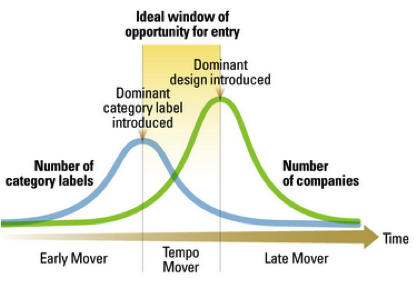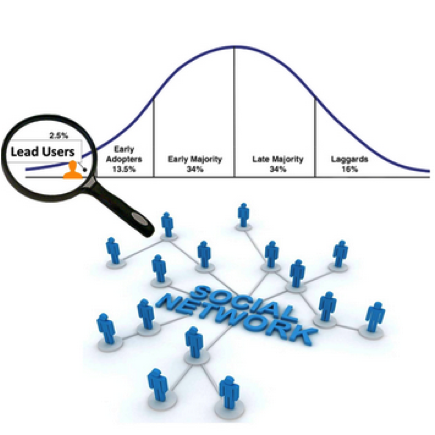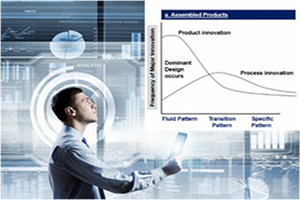MIPLM 2018-19: 3rd module on innovation and IP management
The integration of innovation and IP management has received a rising attention over the last decade. The general shift from an industrial economy into the direction of a knowledge economy makes IP increasingly important. The ongoing and widespread prevailing integration of software into physical products, the usage of IoT technologies and different major technological shift for example in mobility, energy and health care shows, how important IP management within innovation projects has become. The accelerating speed and steeply rising complexity in product development create a need for further professionalism within the integration of IP and innovation management. The systematic interaction between IP competencies and innovation teams is industry specific and depends of the company size.
 Innovation is crucial for competitiveness of companies. There is no secret formula for success, but there are important insights in patterns of failure and management challenges. “The Innovator’s Dilemma” is one of the most important concepts, which explains how innovation takes place and why market leaders and incumbents fail to seize the next wave of innovation in their industries. Clayton Christensen shows how the same (good) practices that lead to a business success can eventually lead to its demise – this is the dilemma in a nutshell. Another valuable concept comes from James Utterback and helps mastering the dynamics of innovation, it’s called “dominant design”. A dominant design is that one, which wins the allegiance of the marketplace, so that customers expect certain features and a specific architecture of a product.
Innovation is crucial for competitiveness of companies. There is no secret formula for success, but there are important insights in patterns of failure and management challenges. “The Innovator’s Dilemma” is one of the most important concepts, which explains how innovation takes place and why market leaders and incumbents fail to seize the next wave of innovation in their industries. Clayton Christensen shows how the same (good) practices that lead to a business success can eventually lead to its demise – this is the dilemma in a nutshell. Another valuable concept comes from James Utterback and helps mastering the dynamics of innovation, it’s called “dominant design”. A dominant design is that one, which wins the allegiance of the marketplace, so that customers expect certain features and a specific architecture of a product.  Competitors and innovators must stick to the dominant design if they hope to receive a significant market share. Dominant designs may not be better than other designs; they simply incorporate a set of key features that sometimes emerge due to technological path-dependence and not necessarily strict customer preferences. Obviously, this understanding of innovation has strong implication for IP strategies and practice.
Competitors and innovators must stick to the dominant design if they hope to receive a significant market share. Dominant designs may not be better than other designs; they simply incorporate a set of key features that sometimes emerge due to technological path-dependence and not necessarily strict customer preferences. Obviously, this understanding of innovation has strong implication for IP strategies and practice.
 An important and frequently used concept in the field of innovation is the integration of lead users into the proofs for developing innovative product concepts. Lead users are customers who think future orientated and can articulate challenges, which they would like to solve. With lead users it is possible to develop concepts and experimental solutions for generating new products. Social media has offered promising new possibilities for companies in terms of supporting lead user integration. The lead user approach was developed by Eric von Hippel and is used for developing breakthrough product. This method is applied in very successful and innovative companies like 3M and Hilti.
An important and frequently used concept in the field of innovation is the integration of lead users into the proofs for developing innovative product concepts. Lead users are customers who think future orientated and can articulate challenges, which they would like to solve. With lead users it is possible to develop concepts and experimental solutions for generating new products. Social media has offered promising new possibilities for companies in terms of supporting lead user integration. The lead user approach was developed by Eric von Hippel and is used for developing breakthrough product. This method is applied in very successful and innovative companies like 3M and Hilti.
Innovation frequently translates into the creation of new markets forcing firms, which decide to enter a new market, to choose an appropriate strategy. Timing is a very important strategic tool for example when launching a new product. Companies follow different entry timing strategies for hitting the market. There are first mover and follower advantages and disadvantages, which have both strong implications to IP management. The timing of entry depends for example significantly on the demand and technology uncertainty of a new product. Creating a brand identity, finding the dominant design or crating a standard and a licensing program are means of IP management to support the timing strategy in innovation management.
 Regarding the innovation process and the IP management processes the discussion leads to business process management (BPM). BPM is the discipline of improving a business process from end to end by analyzing it, modelling how it works in different scenarios, executing improvements, monitoring the improved process and continually optimizing it. A business process is an activity or a set of activities that will accomplish a specific goal like the FTO process, the trademark-enforcement process or the IP-design process. BPM allows organizations to understand the various processes that happen within an organization, analyze them from end to end and improve them on an ongoing basis. IP management as an integrated management system is based on a process landscape, which comprises all technology and market-relevant processes in addition to innovation- and information processes. Optimizing this process landscape according to the IP strategy is the challenge of IP management.
Regarding the innovation process and the IP management processes the discussion leads to business process management (BPM). BPM is the discipline of improving a business process from end to end by analyzing it, modelling how it works in different scenarios, executing improvements, monitoring the improved process and continually optimizing it. A business process is an activity or a set of activities that will accomplish a specific goal like the FTO process, the trademark-enforcement process or the IP-design process. BPM allows organizations to understand the various processes that happen within an organization, analyze them from end to end and improve them on an ongoing basis. IP management as an integrated management system is based on a process landscape, which comprises all technology and market-relevant processes in addition to innovation- and information processes. Optimizing this process landscape according to the IP strategy is the challenge of IP management.
Case study presentations:
Task 1:
Brand Value Creation
Please explain the 4P-concept and how this concept could apply to the case of an individualized parking experience. Please outline the brand steering wheel for the brand that should be created. For this purpose please distinguish the resource perspective and the market perspective of the brand steering wheel. Please explain how the brand promise might be proven in the case on hand. Please give ideas for how such an ecosystem could be designed for the individual parking experience.
Here you can follow the presentation to task 1:
Presented by:
- Frederic Sahores, STMicroelectronics SA, Crolles, France
- Charles Roger, France Brevets SAS, Paris, France
- Martin Salzburger, Airbus Defence and Space GmbH, Manching, Germany
- Vincent Chevroton, Faurecia Innenraum Systeme GmbH, Hagenbach, Germany
- Kamran Houshang Pour Islam, IPI, Bern, Switzerland
- Christiane Marti, Novartis Pharma AG, Basel, Switzerland
Task 2:
IP Process Management
Please show the core processes of IP management and give a short description of these processes. Please choose one IP management core process and show examples for related sub-processes. Please choose any IP management sub-process and show the associated workflows. Please choose the sub-processes identified in task 2 and define inputs and outputs for these processes. Please assign the IP management process related functions to typical functions in the company. Please choose a stylized innovation process and show typical process interfaces with the IP management process.
Here you can follow the presentation to task 2:
Presented by:
- Oliver Feldhaus, ITEM Industrietechnik GmbH, Solingen, Germany
- Björn Möller, Siemens AG, Munich, Germany
- Isabella Ferri, Solvay SA, Bollate, Italy
- Katsuya Iwazaki, Toyota Motor Corporation Ltd., Aichi, Japan
- Plamena Giorgieva, EUIPO, Alicante, Spain
- Idoia Apraiz, Galbaian, Mondragon, Spain
- Roland Bittner, Siemens AG, Erlangen, Germany
Task 3:
IP Design
Please explain how different design thinking methods can be combined into a unified approach to comprehensively describe a concrete usage scenario and its framework conditions. Please carry out a cognitive walkthrough for the “car in a parking garages” usage scenario. Choose a part of the process steps you have identified in the course of the cognitive walkthrough. Perform the AEIOU-method for these process steps and present the results in swim lanes. Please identify issues that have to be solved by means of technology to provide the customer benefit. Please select one of the uniqueness environments you have identified and work out the technical tasks that need to be performed to solve the real-life task. Please select one of the invention cores you have identified, describe the individual points of the technical problem and work out different features that could solve them.
Here you can follow the presentation to task 3:
Presented by:
- Hendrik Promies, Siemens AG, Erlangen, Germany
- Michael Kirklies, KIPAT Patentänwalte, Neu-Ulm, Germany
- Andreas Weiland, Maschinenfabrik Rieter AG, Winterthur, Switzerland
- Rabia Nurgul Ozbaylanli, Turkish Patent and Trademark Office, Ankara, Turkey
- Neha Goel, Eaton India Innovation Center, Pune, India
- Giulia Ubertone, Self-employed lawyer, Monza, Italy
- James Eilertsen, Heptagon OY, Rueschlikon/Zurich, Switzerland



